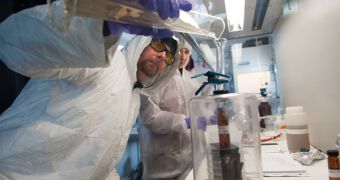Several teams of scientists have been looking for signs of life under thousands of meters of Antarctic ice. While there's no conclusive evidence yet, they are getting closer to determining if these extreme conditions can harbor life or are completely barren.
Earlier this week, a US team has managed to drill down to the Antarctic Lake Whillans, 2,600 feet or almost 800 meters under the ice.
Not quite as deep as Lake Vostok, where a Russian team is attempting to recover samples as well, but deep enough for the discovery of life to be meaningful.
Analyzing the first samples from the Whillans lake will take weeks or months; however, the team was able to do one quick test on the spot by using a special DNA-sensing dye.
Sure enough, under the microscope, water samples retrieved from the lake below had cells in them, glowing green from the dye.
It is too early to call it a discovery, but it's a promising start. Further analysis will be needed to confirm that the life forms, if they are there, came from the lake itself and were not introduced by the drilling process as was the case with the first samples from the Vostok lake.
If there is life down there, it is surviving in extreme conditions. There's no light so far down, the temperatures are low and the pressure enormous.
Scientists believe that any bacteria living in these Antarctic lakes would survive on rocks essentially, consuming pyrite minerals for their iron and sulphur which they oxidize to produce energy.
One byproduct of this process is sulfuric acid which, in time, would dissolve the other minerals on the lake bed eventually releasing sodium, potassium, calcium and other materials into the water.
Samples from the lake showed that the water had a much greater concentration of minerals than the ice above it, indicating that something is happening.

 14 DAY TRIAL //
14 DAY TRIAL //